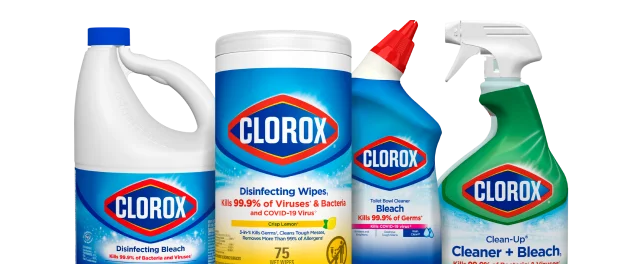How to Use Clorox® Clean-Up® Cleaner + Bleach to Disinfect

Follow these money-saving instructions on how to make your Clorox® Clean-Up® Cleaner + Bleach last longer with more uses by diluting with water every time you clean.
As we all try to keep our families healthy and safe, the need for disinfecting products has reached extraordinary levels. To help, we put together these instructions on how to make your Clorox® Clean-Up® Cleaner + Bleach last longer with more uses.
How to use Clorox® Clean-Up®
Clorox® Clean-Up® Cleaner + Bleach is safe to use on lots of surfaces throughout your home. Follow these easy steps, always remembering to follow the safety precautions on the label:
Pre-clean the surface
If the surface is dirty, pre-clean to remove any dirt or grime.
Mix the bleach solution
Next, mix 1 tablespoon Clorox® Clean-Up® Cleaner + Bleach per 2 cups water (or 2 teaspoons per 1 cup water).
TipMake a fresh solution every time. Don’t keep a diluted solution for more than 2 hours to ensure efficacy. Discard any remaining solution when you’re done using it and make a fresh solution each time.
Apply the solution directly to the surface
You can use a microfiber cloth or a synthetic mop, sponge or rag. Paper towels or other natural fiber materials (such as paper, cotton, wool, bamboo, etc.) can be used but are not preferred since they can degrade the bleach solution, making it less effective. Make sure the surface stays visibly wet for 5 minutes.
Ensure kids and pets don’t come into contact with the wet solution.
Wipe or rinse off the solution and allow to air dry
If you’re disinfecting a surface that comes in contact with food, you should rinse it with potable water after disinfecting.
Where to use Clorox® Clean-Up®
The diluted solution should be fine to use on the following surfaces, but you should test a small inconspicuous area first.
- Appliances
- Most bathroom surfaces, including glazed tile, tubs, fiberglass, glass shower doors, vinyl curtains, counters, cabinets, sinks and no-wax floors.
- Hard, nonporous kitchen countertops, including synthetic or cultured marble (though not on natural marble)
- Other surfaces around the home, including Linoleum, Formica® counters or Corian® countertops, stainless steel, sealed granite and chrome
Avoid contact with clothes, fabric, wood, rubber, unsealed painted and paper surfaces.


